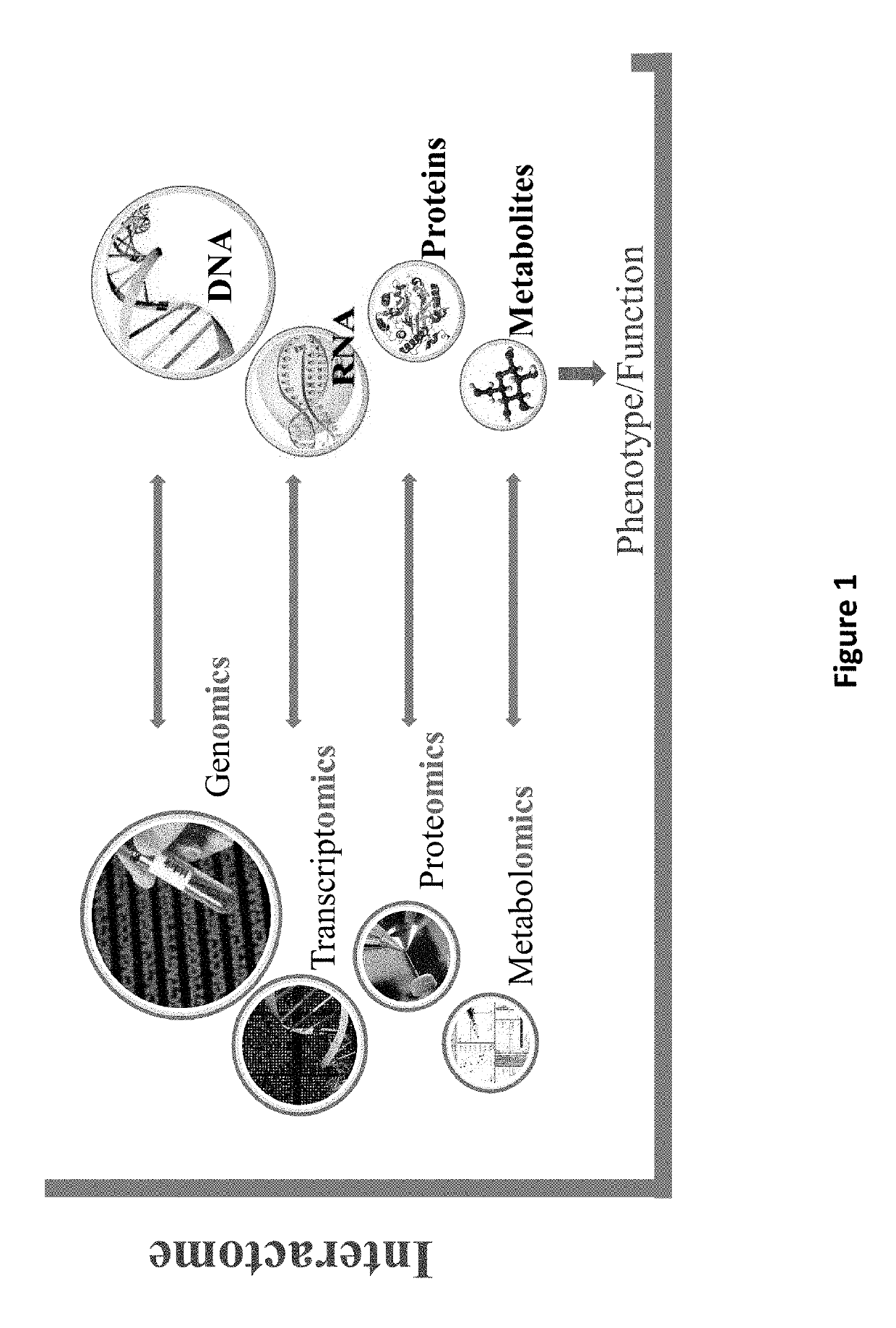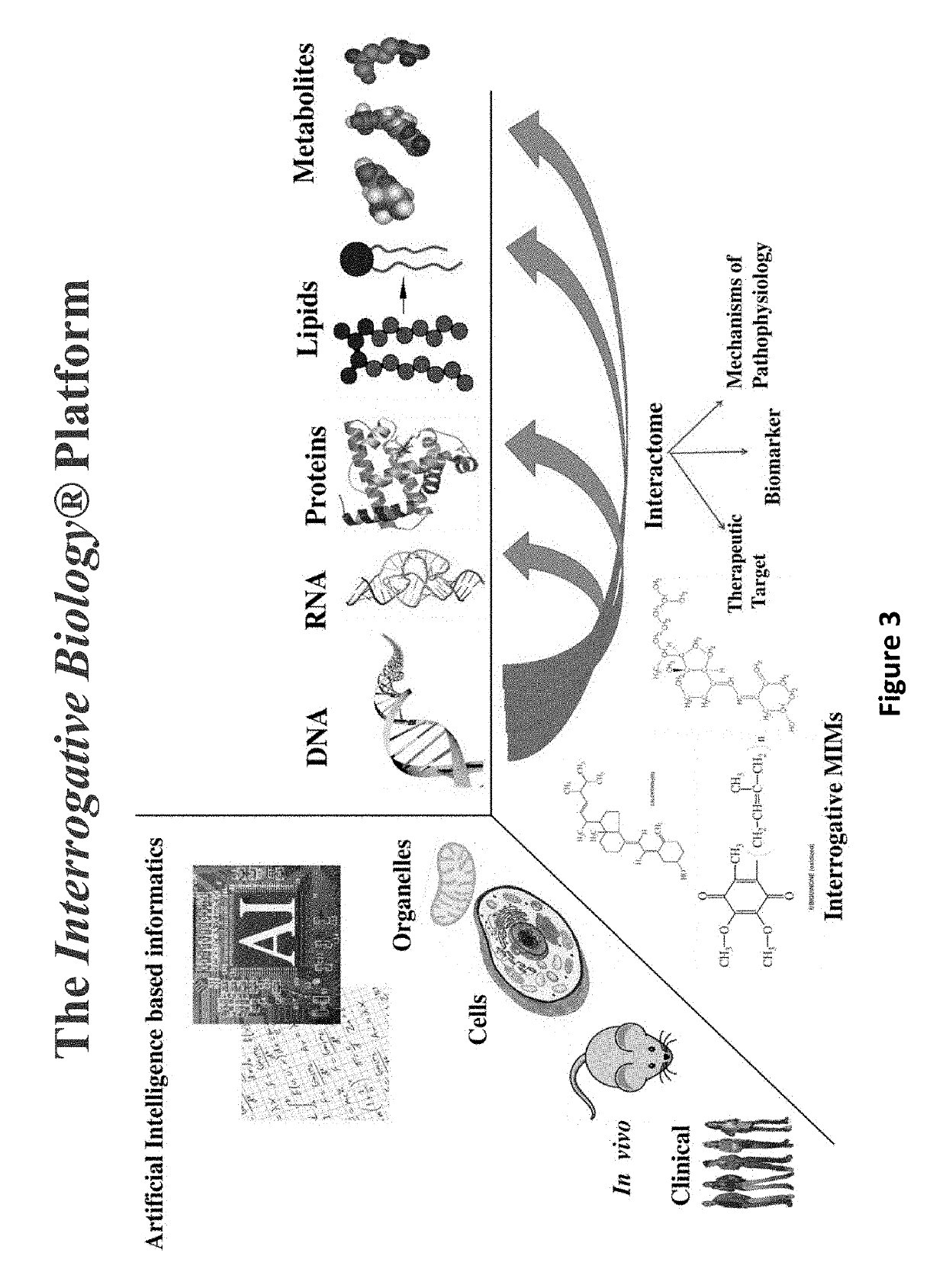Compositions and methods for diagnosis and treatment of pervasive developmental disorder
a technology of pervasive developmental disorder and compositions, applied in the direction of drug compositions, peptide/protein ingredients, instruments, etc., to achieve the effect of enhancing the standard of care and furthering our understanding of the diseas
- Summary
- Abstract
- Description
- Claims
- Application Information
AI Technical Summary
Benefits of technology
Problems solved by technology
Method used
Image
Examples
example 1
Identified as Uniquely Up or Down Regulated in Autism Vs. Normal Samples
[2501]Studies were performed using the above described Platform Technology with lymphoblast cells from autism patients and normal unafflicted parents or siblings of the autism patients to identify proteins which are uniquely upregulated or downregulated in the autism disease state. Lymphoblast cell samples from four autism patients and five unafflicted controls (see FIG. 9) were prepared by using the cell lines obtained from Coriell Cell Repositories (403 Haddon Avenue Camden, N.J. 08103). The results of these studies were analyzed using data processing within the Platform Technology as described above.
[2502]The results of these studies identified proteins such as SPTAN1, HSP90B1, GLUD1, and CORO1A as global differential network hubs / nodes which are uniquely up or down regulated in samples from Autism patients compared to samples from normal unafflicted parents or siblings of the autism patients (see FIG. 10). M...
example 2
Entities Driven by Disease State and Identified as Common to Autism and Alzheimer's Disease
[2508]Studies were performed using the above described Platform Technology with lymphoblast cells from autism or Alzheimer's disease patients and from normal, control individuals, e.g., unafflicted parents or siblings of the Autism and / or Alzheimer's patients, to identify proteins which are uniquely upregulated or downregulated as compared to controls and also common to both autism and Alzheimer patients. Lymphoblast cell samples from four autism patients and five unafflicted controls (see FIG. 9), and from four Alzheimer patients and four healthy controls (matching age and gender), were prepared by using the cell lines obtained from Coriell Cell Repositories (403 Haddon Avenue Camden, N.J. 08103). The results of these studies were analyzed using data processing within the Platform Technology as described above.
[2509]The results of these studies identified that the following proteins were comm...
example 3
ism Spectrum Disorders (ASD) Biomarkers Identified Using the Interrogative Biology Discovery Platform
[2511]Applicants have employed herein a novel approach combining the power of cell biology and multi-omics platforms in an Interrogative Discovery Platform Technology in order to identify novel biomarkers for Autism Spectrum disorder, e.g., autism. A cell model system for Autism Spectrum Disorder, and in particular for autism, was developed and employed, which comprised Lymphoblast cell lines obtained from patients used as cell model to represent Autism disorder. These cells were treated with or without the MIMs to capture the pathological proteome changes unique to a pervasive developmental disorder, e.g., autism. A 2D-nanoLC-MSMS workflow was developed to profile and relatively quantify the cellular and secreted peptides / proteins. While only proteomic analysis was carried out in this example, multiple data output may readily be employed and analyzed in the platform technology, incl...
PUM
| Property | Measurement | Unit |
|---|---|---|
| temperature | aaaaa | aaaaa |
| temperature | aaaaa | aaaaa |
| autism spectrum disorder | aaaaa | aaaaa |
Abstract
Description
Claims
Application Information
 Login to View More
Login to View More - R&D
- Intellectual Property
- Life Sciences
- Materials
- Tech Scout
- Unparalleled Data Quality
- Higher Quality Content
- 60% Fewer Hallucinations
Browse by: Latest US Patents, China's latest patents, Technical Efficacy Thesaurus, Application Domain, Technology Topic, Popular Technical Reports.
© 2025 PatSnap. All rights reserved.Legal|Privacy policy|Modern Slavery Act Transparency Statement|Sitemap|About US| Contact US: help@patsnap.com



